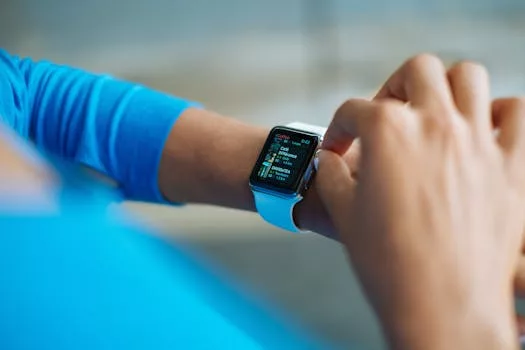
“
The Convergence of AI and Wearables: Shaping the Future of Personal Tech in 2025
The convergence of AI and wearables is AI and wearables, a revolutionary technology that is transforming the way we live, work, and interact with our surroundings. In this article, we will explore the current state of AI-powered wearables, their applications, and the future of personal tech.
Introduction to AI-Powered Wearables
Wearables, such as smartwatches, fitness trackers, and smart glasses, have become increasingly popular in recent years. The integration of AI into these devices has enabled them to perform more complex tasks, such as health monitoring, fitness tracking, and personalized recommendations. For more insights on this topic, check out Wearable Tech in 2025: Bridging the Gap Between Health and Technology.
AI-powered wearables use machine learning algorithms to analyze data from various sensors, such as heart rate monitors, GPS, and accelerometers. This data is then used to provide insights into the user’s health, fitness, and behavior, enabling them to make informed decisions about their lifestyle.
Applications of AI-Powered Wearables
AI-powered wearables have a wide range of applications, including:
- Health Monitoring: AI-powered wearables can monitor vital signs, such as heart rate, blood pressure, and blood glucose levels, enabling early detection of health problems.
- Fitness Tracking: AI-powered wearables can track physical activity, such as steps taken, distance traveled, and calories burned, providing personalized fitness recommendations.
- Personalized Recommendations: AI-powered wearables can provide personalized recommendations for nutrition, sleep, and stress management, based on the user’s lifestyle and preferences.
Future of Personal Tech
The convergence of AI and wearables is expected to continue to shape the future of personal tech. Some potential trends and applications include:
- Augmented Reality: AI-powered wearables may integrate augmented reality (AR) technology, enabling users to interact with virtual objects and environments.
- Brain-Computer Interfaces: AI-powered wearables may enable brain-computer interfaces (BCIs), allowing users to control devices with their thoughts.
- Quantum Computing: AI-powered wearables may utilize quantum computing, enabling faster and more complex calculations, and opening up new possibilities for AI research and development.
Conclusion
In conclusion, the convergence of AI and wearables is revolutionizing personal tech, enabling new levels of health monitoring, fitness tracking, and personalized recommendations. As AI technology continues to evolve, we can expect to see even more innovative applications and trends emerge in the future. For a deeper dive into upcoming innovations, read The Future is Now: Key Wearable Tech Innovations to Look Out for in 2025.





1 thought on “The Convergence of AI and Wearables: Shaping the Future of Personal Tech in 2025”
Comments are closed.